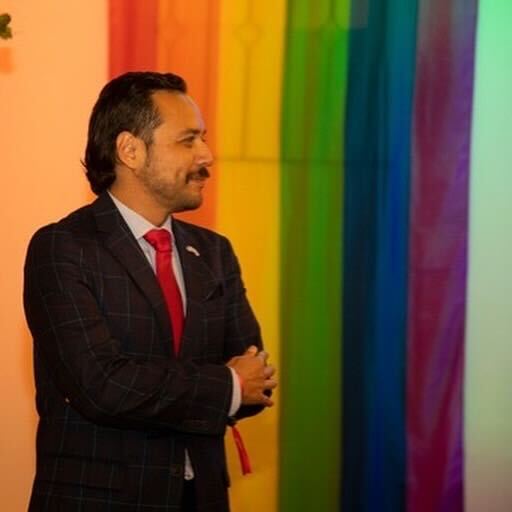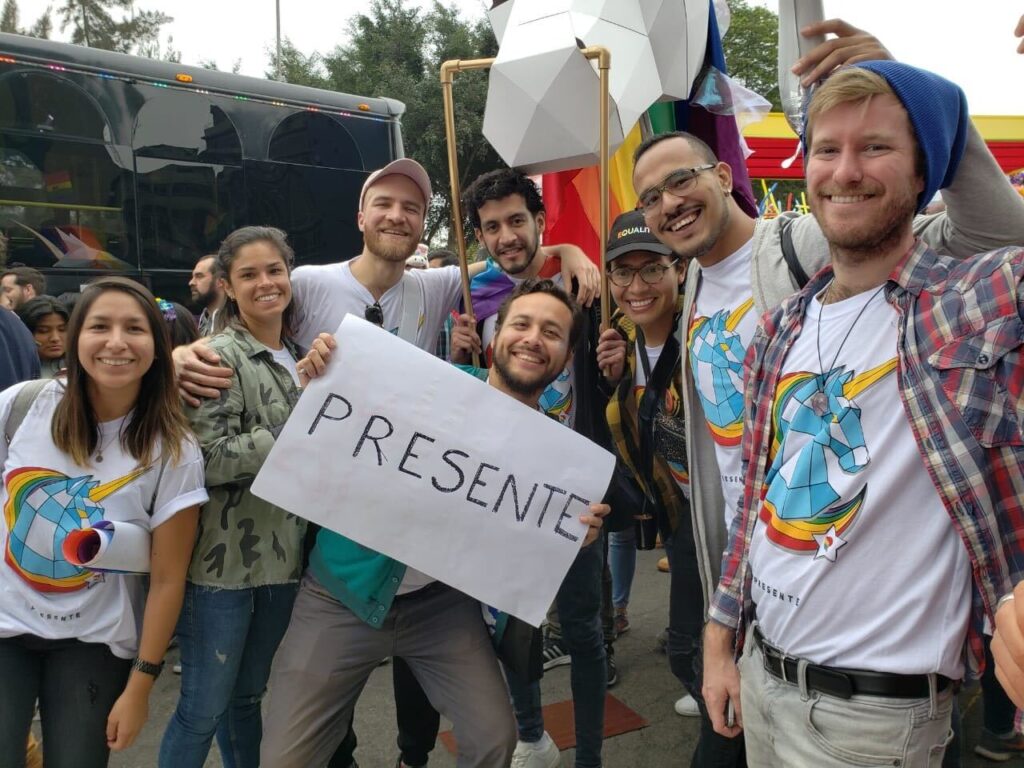by Gabriel de la Cruz Soler, Senior Manager, Global Impact Programs (LATAM) at Out & Equal
When I moved to the United States, I discovered a new América Latina (Latin America). Not the part of Latin America where I grew up, but a mix of accents, colors, food, music and, origins that form this new culture, constructed and institutionalized in the United States. All summed up in one term: Latino. Suddenly, I was no longer Peruvian. I was a Latino living in Texas, which came with multiple misconceptions steeped in xenophobia and often times, downright ignorance. “Are you an illegal alien?” “How far is the border from Peru?” “How long did it take you to walk?” While their questions were relentless, the queries didn’t stop there.
Marking the checkbox in my first official survey, I discovered that I’m also Hispanic. That new term is still stuck in my head, and to this day, I’m still trying to understand what it means. I’ve concluded that personally, Hispanic means nothing to me. I am Peruvian, not Hispanic. “Hispania” is not a country or a region and says more about our colonizers than about the places we come from. However, for first, second, third and, other generations of Latin immigrants, they most identify with the term Hispanic. It’s the term they use to be counted, to feel like they belong, and to ultimately find community.
TransLash Media reminds us that in 1977, the US Federal Office defined Hispanic as “a person of Mexican, Puerto Rican, Cuban, Central America or South America or other Spanish culture or origin, regardless of race.” Since then, the term Hispanic isn’t merely used in surveys and censuses. The term unites us—one people and one shared culture.
Sociologist Cristina Mora explains how activists, bureaucrats, and media executives in the 1970s and ’80s created a new identity category—and, by doing so, permanently changed the racial and political landscape of the nation. Some argue that these cultures are fundamentally similar and that the Spanish language is a natural basis for a unified Hispanic identity. In fact, the Duke University School of Medicine made the following definitions based on interviews with their Latin students: “Hispanic” refers to a person with ancestry from a country whose primary language is Spanish. “Latino” and its variations refer to a person with origins from anywhere in Latin America (Mexico, South and Central America) and the Caribbean.
A Conversation in Flux
As the discussion continues, the Latin community has no agreed-upon consensus or catch-all phrase to define us, which speaks directly to our rich multicultural heritage. The Spanish were among the first to arrive in the Americas, however, we’ve also had huge waves of Asian, African, Arab, and other immigrants who have deeply impacted our cultures. These differences are important to embrace as well as track. For instance, if a Black Latina woman is identified only as a Black woman in a census, the data will likely miss the countless other challenges she may face as an Afro-Latina. According to a CNN analysis of census data, in the last decade, the number of people across the US who identify as Black and Hispanic (sic) has increased 11.6%.
From a gender perspective, not everybody feels comfortable with the term “Latino.” The Real Academia Española mandates the generic use of the masculine without distinction of gender. This official stance renders women invisible and, since the 1970s, has been a major source of contention and pushback from feminist movements. In short, what is not named does not exist, and Latinas deserve to be recognized.

Dismantling Colonial Ties & Gender Constructs
With the rise of Queer studies in the US, the trans and nonbinary Latin community finds in the letter “X” a way to confront binary language. In Spanish, we don’t have “they/them,” and “it,” is always masculine or feminine. For that reason, in the 2000s – 2010s, the LGBTQI+ movement in Latin America imported the X from US academia and began using it in articles, papers, and research. It’s also worth noting that American Civil Rights leader, Malcom X, along with many other Black Muslims, replaced their surnames with the letter X—a mathematical term, symbolizing the unknown and also a direct form of protest in recognition that their true, African identities had been stolen.
The word Latinx became popular after the 2016 Pulse nightclub massacre, where more than 90% of the victims were from the Latin community. Latinx was the term that was used in the United States and throughout Latin America in solidarity with the victims. Although different groups in the US still use the term as a political statement overruling colonizers and demanding inclusion, many Latinos and Latinas say the term is offensive and agree that it’s becoming the least popular because it isn’t accessible to everyone.
Some authors, such as Bryan Betancur insist that the term “Latinx” further marginalizes underrepresented populations by restricting their access to linguistic practices perpetuated by American academics. And according to Morales Obando a nonbinary, Gen Zer, these alternatives are “ableist” such as the case of blind people who use text-to-voice apps.
The use of the “X” in Spanish and Portuguese speakers evolved into the use of the letter “e.” Sometimes we will read “Latine Heritage Month”, “amigue” (friend), “bienvenides” (welcome), “todes” (all), which, although it is the most inclusive use of the language by questioning binary Spanish, could be a barrier in conversation with other generations, even within our own families.
One Culture. Countless Identities.
Hispanic, Latinx, Latine, Latino, or Chicano? When it comes to labeling ourselves, there is no one correct answer. It depends on when you immigrated to the US, where you studied, where you were born, where you grew up, what your gender is, what generation you’re from, and what community you would like to be a part of. Personally, from an LGBTQ+ perspective, I prefer to use the “e”, I say Latine and try to help everyone understand its uses.

According to 2020 Census data, there are 62.1 million Latines living in the United States. We are 18.9 percent of the total US population—and growing. The Latine population has more representation in the media and at our workplaces than ever before. Even now, we have a variety of voices representing us in government. It’s this type of representation that makes us not only proud, but confident in our immediate future as well as the future of our families for years to come.
If you don’t know how to celebrate the historic month, open the conversation with your Latin team. When in doubt, ask them what term they feel more comfortable using. Even beyond your corporation, if you’re truly looking to be inclusive, take this same energy into your communities. Be inquisitive. Ask people how they prefer to identify and be sure to always respect their answer. Use “Latin” as an umbrella term, recognizing and honoring the wealth of diversity that falls beneath it. And if you have the opportunity to administer a survey, listing every country may not be feasible, but including the regions of Latin America; South America, Central America, the Carribean, and Mexico, could be a viable option.
No matter the month, I am a proud Peruvian and I love to start every presentation by sharing a bit about the love I have for my home country. However, living in the United States has helped me recognize that there is something else that connects us no matter where we are in the world: los tamales, el arroz con plátanos o huevos fritos, los frijoles, la cumbia, la salsa y el reguetón, sending long voice notes through WhatsApp, las telenovelas, and listening to Bad Bunny while we shower. So, if you see me on the dance floor, you will recognize my heritage. I am Latine, and just like Shakira, “My hips don´t lie.”